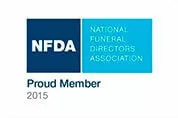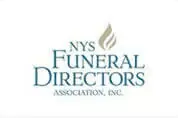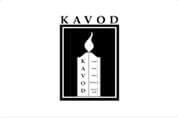Monuments
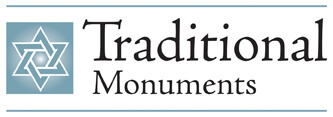
Showing all 15 results
-

A. Double Headstone
Read More -
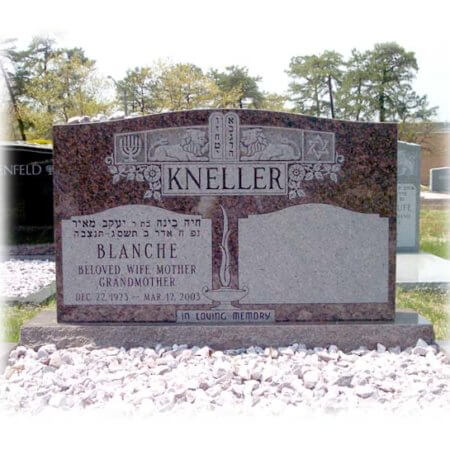
B. Double Headstone
Read More -
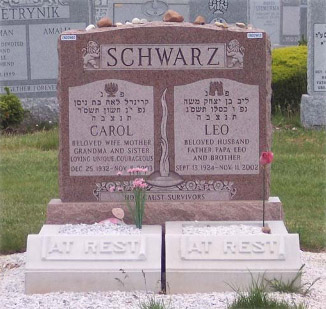
C. Double Headstones
Read More -
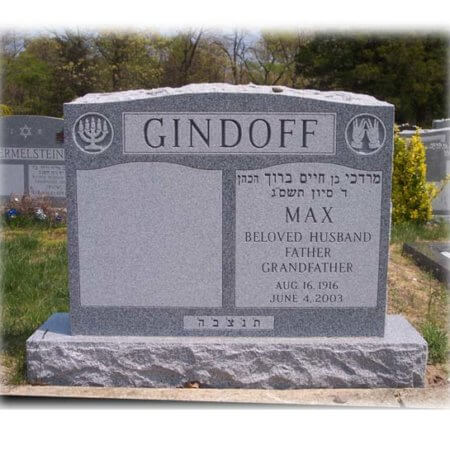
D. Double Stone
Read More -
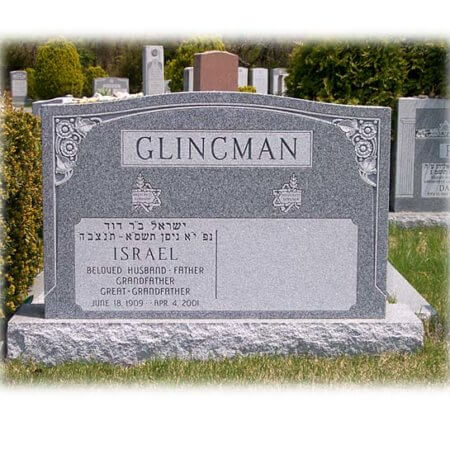
E. Double Headstone
Read More -
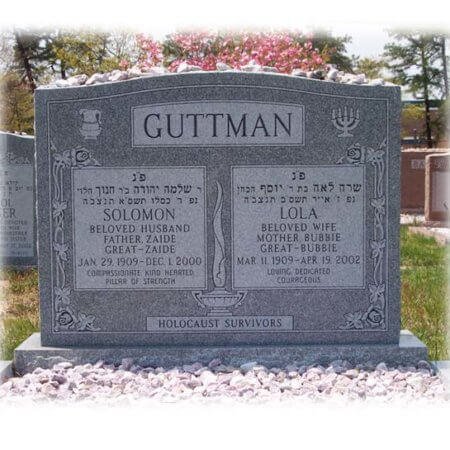
F. Double Headstone
Read More -
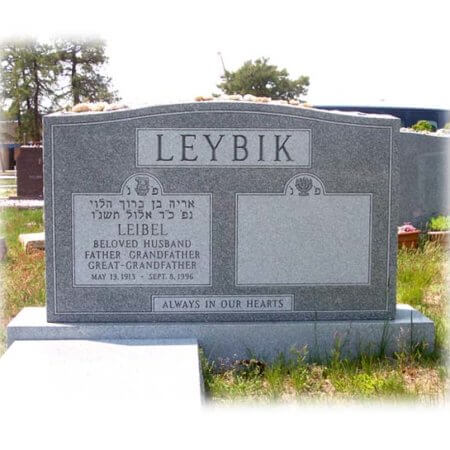
G. Double Headstone
Read More -
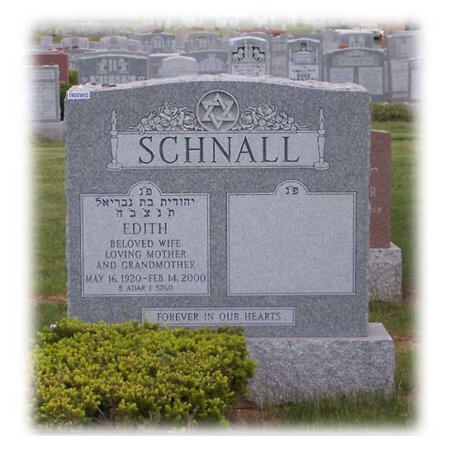
H. Double Headstone
Read More -
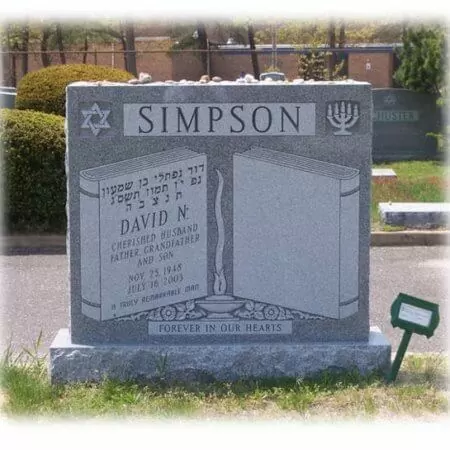
I. Double Headstone
Read More -
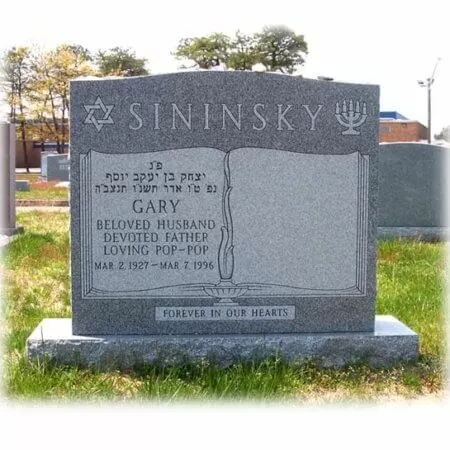
J. Double Headstone
Read More -
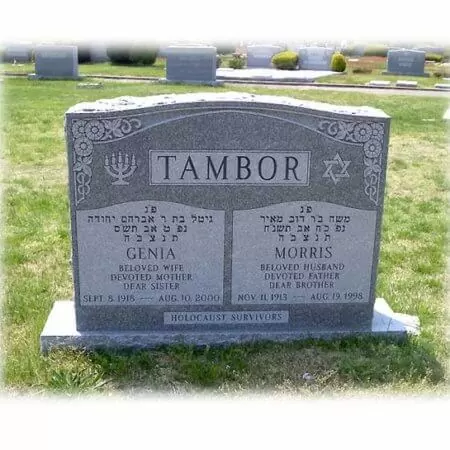
K. Double Headstone
Read More -
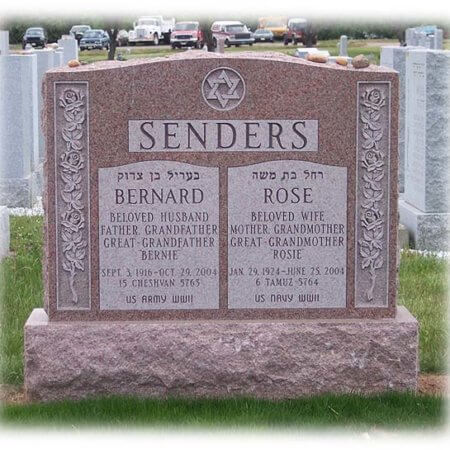
L. Double Headstone
Read More -
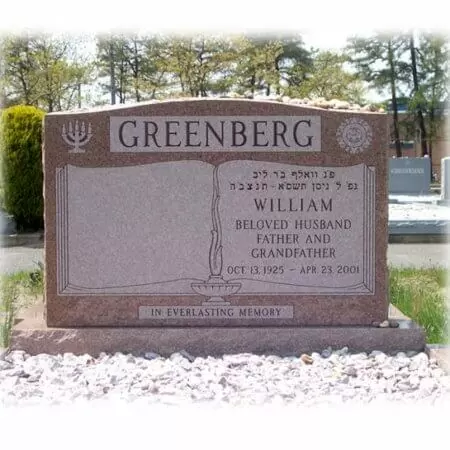
M. Double Headstone
Read More -
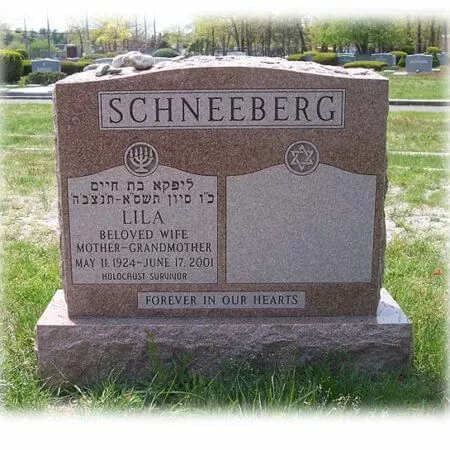
N. Double Headstone
Read More -
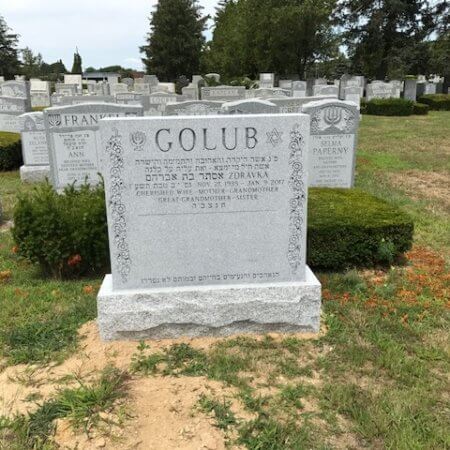
O. Double Headstone
Read More
Erecting a monument is a very ancient tradition
In our tradition, a grave should be marked as soon as possible. Please know, the process for a proper design and cut of a monument could take up to 4 months depending on the family’s wishes.
Our process usually starts with the stone itself; the size, shape, color and the basics about the rock. During this conversation, we also start to talk about the engraving, the text and images that will be on the stone. The initial conversation can begin here in the office at the time of the funeral arrangement, but often families like to separate the two discussions and prefer a monument appointment soon after the funeral service.
From there, our conversations continue about the design via phone calls, emails, mail and faxes with the family until we reach final approval. A timeline for cutting, delivery and setting is discussed in order for the family to confidently schedule their unveiling service.
Following are facts one should have ready when preparing to purchase a monument:
- The name of the cemetery and the exact location of the plot.
- The deceased’s full English names.
- The full Hebrew name of the deceased and his or her father’s name.
- The birthdate (this may be omitted).
- The date of death (and the approximate hour of death if death occurred near twilight in order to determine the exact date).
- The relationship to family: spouse, parent, child, partner, grandparent, friend, etc.
- Jewish status: Kohen or Levi.
- Society and/or family plot information.
Type of Monument
Monuments are created to provide a lasting personal tribute to a loved one and to honor Jewish Tradition. Families often feel overwhelmed by the many details involved in creating a proper memorial. There are design and inscription decisions to be made, cemetery regulations to consider, and Jewish customs and traditions to consider.
- While the form of the marker is of little religious significance, what is important is that there be a clear, visible demarcation of the gravesite
- The cost of the monument is usually determined by the lettering, carving, ornamentation, and finish, rather than by the size alone.
At Traditional Monuments we coordinate every decision involved in making the monument, from design to placement. We provide:
- Experienced artisans who create original monuments, or match and duplicate existing ones.
- Complete understanding of the regulations of all area cemeteries and burial societies.
For over three generations, families have trusted Traditional Monuments to care for loved ones with compassion and respect. Let Traditional help you create a unique and lasting tribute to your loved one.
Create a Monument
- Select the Size and Shape
Our markers come in an array of sizes and shapes. Below are several popular shapes, but today’s monuments can be shaped into any form. Because our monument specialists are familiar with all the area cemeteries, we can advise you on which styles and sizes meet the regulations of your preferred cemetery.
- Select the Color
Our monuments are available in a variety of colors including whites, grays, reds, pinks, blacks, and marbles. Our monuments are made with the finest quality materials from the best granite quarries in the world. We also specialize in preparing bronze memorials. - Select the Design
We can help you with the selection of interpretive ornaments, images and commemorative symbols, epitaphs, and lettering styles and finishes that can perpetuate precious personal and family ties. These images can be either carved or etched. Below is a sampling of our capabilities. We have thousands of standard designs to choose from or can help you create a custom design.
We can guide you to create an inscription that will express your feelings in English, Hebrew, or Russian.
Call today for your free, no-obligation consultation
Frequently Asked Questions
A monument is a very significant purchase that requires many decisions and details, so it is natural to have a lot of questions about the process. For your convenience, we have answered the most frequently asked questions regarding monuments including timing of an order, placement of the monument, design and material choices and more.
How soon after death should a monument be ordered?
While there is no “proper” time to order a monument, it should be taken care of as soon as one is comfortable doing so. Many people today find it convenient to arrange for the monument at the same time they make funeral arrangements. Others wait until the conclusion of the shivah period, when they can take more time to think about personalizing a monument. Once again, it is a labor intensive process and it can take up to four months depending on your selections.
What factors will affect the timing of the placement of the monument and how does this affect the timing of my order?
There are many factors that can affect the timing of delivery and placement of a monument, such as the choice of materials and/or intricacy of the monument design. While the average time is two to four months between the ordering of a memorial and its placement at the gravesite, in some cases, it may take as long as six months or more given the specific factors involved.
One of the most time-consuming factors is the pouring of the foundation. If a foundation does not currently exist, the timing of the pouring may be affected by:
Cemetery Regulations – Burial societies and cemeteries have varying regulations regarding the placement of monuments. Some cemeteries will not even pour a foundation until six to nine months after the burial.
Seasonality – The winter months prevent the construction of foundations because concrete cannot be mixed during freezing weather. If an unveiling is planned for the early spring, arrange to purchase the monument no later than early November. The foundation can then be finished before the frost sets in. Foundation construction is usually halted in winter until March or after the ground has thawed out.
Our monument specialists are familiar with the cemeteries and burial societies in the metropolitan area, and can work to ensure timely delivery and placement on your behalf.
Should monuments be considered when pre-planning a funeral?
Pre-need funeral and memorial arrangements have become increasingly popular in recent years, and with good reason. The period following the interment is usually a difficult time for the family. Close loved ones and immediate family members may not be in the proper state of mind or have the emotional clarity to take on the task of selecting a fitting memorial. A more elaborate headstone, a family monument or an estate memorial, requires a great deal of planning. Pre-need planning allows for a careful review of the various options allowed by different cemeteries and memorial parks, and provides your loved one with the security of knowing that their final arrangements will be properly carried out. Pre-need planning also provides protection against price increases and can legally be figured into pay-down expenses for eligibility for healthcare programs. Initiating a pre-need consultation is quick and easy. Simply contact us today.
When is it best to order a double grave monument?
If there is a reserved grave adjacent to the burial, a double monument is often preferable. In addition to giving assurance to the survivor that the burial site has been reserved for them, there is some comfort in the knowledge that the survivor’s final resting place will be at the side of one’s lifelong companion.
Situations in which double monuments might be used are:
- Husband and wife
- Two unmarried sisters
- Mother and daughter
- Father and son
- Two brothers
- Partners
Commonly used Epitaphs:
- With Us Always
- So Dearly Loved
- Tenderly Remembered
- Our Beloved
- Remembering Forever
- In Loving Memory
- Forever in Our Hearts
- Always in Our Hearts
- Loved By All
- A Kind and Gentle Soul
- The End Reward of Toil is Rest
- So Short a Life, So Long a Memory
- In Our Thoughts Forever
- A Man Greatly Beloved
- Love is A Memory That Never Fades
- So Well Remembered
- So Sorely Missed
- Devoted in Life, In Death Not Divided
- United in Life, Inseparable Forever
- She/He Gave Joy and Laughter To The World
What information will I need to purchase a monument?
- The name of the cemetery where the monument is to be delivered.
- The name of the congregation or burial society from which the plot was purchased.
- The correct English name of the deceased.
- The correct date of birth.
- The date and approximate hour of death. (This information will be used to establish the Hebrew date of death.)
- Hebrew names of the deceased and deceased’s father.*
- If the father was a Kohen, Levi, or Israelite.
- Any desired special symbols.
- Any desired expressive epitaphs.
* The name, if not known by an immediate family member might be known to a more distant relative or might be found on a family document, such as the Ketuba (marriage document) or a baby-naming certificate. If you need assistance in locating the name, we would be happy to discuss this with you.
The required information listed above is the same information required at the time the funeral arrangements are made, which is a reason why many families choose to purchase the monument at the time of making funeral arrangements.
I am not sure what to order, can you help me?
With many variables that affect the ordering of a monument, we understand that it can be overwhelming for families. Let us help. We will review the cemetery or burial society regulations. We are then able to advise you as to the size and style of monument that will fit well in the area.
What if our cemetery requires a bronze plaque rather than a stone memorial?
We also specialize in preparing bronze memorials set on a granite base.
How do you select the proper design of a memorial?
A true memorial should be designed with a two-fold purpose:
- To express your love, affection, and admiration of one whose life was deeply interwoven with yours.
- To reflect the personality, achievements, ambitions, avocations or credo of the departed one.
Traditional Monuments can assist you in the selection of interpretive ornaments, commemorative symbols, and epitaphs that can perpetuate precious personal and family ties.
What are the components of a fine memorial?
There are many different components that make a fine memorial. The following are basic guidelines to help you determine the level of quality.
- Lettering should be deep, and legible without the use of black paint (which will eventually fade away or streak and which many cemeteries prohibit).
- Carving of ornamentation shapes should be sharp and clear. Backgrounds of the ornamental elements should be darker than the elements themselves.
- Finish – Polished surfaces should have a high, deep shine. A deep and dark polished area can border lettering surfaces, framing them.
- Materials – Granite from the same area can vary greatly in color, purity, and cost. The granite should be consistent in color, graining, and strength. The granite used for the monument must also be free of impurities.
Remember, size should not be the measure of value when assessing a monument. It is the finer points of artistry, craftsmanship and quality that truly define a fine memorial.
Can you guide me in what to write on the monument?
An inscription is meant to be a lasting tribute, so it needs to be correct. This is why we have made this one of our specialties. We can guide you to create an inscription that will express your feelings in English, Hebrew, or Russian.
Can you duplicate an existing monument of a family member interred nearby?
Absolutely. First, we send a field representative to the gravesite where photos, rubbings, and measurements are taken of the existing headstone. From these, our experienced craftsmen can carefully create an accurate reproduction, within the limits of existing technology.
How do I get the second side of an existing double headstone inscribed?
We will send a field representative to the gravesite. Photos, rubbings, and measurements will be taken of the existing headstone to assure an accurate duplicate inscription.
What is the best material choice for a monument?
In the past, stone carvers used soft materials such as marble, slate, and limestone. With the advent of hardened and carbide steel tools, granite has become the preferred material of choice due to its durability.
What color choices are available?
Granites are available in many colors from the quarries of the world:
- White/Light Grey – About 95% of monuments sold in New York City are made from this color granite, generally referred to as Barre Grey
- Pink – Often, sourced from Canada, this granite has a fine workable grain.
- Ruby Red – This granite, found in Wisconsin, can attain a glistening polish because of its amazing hardness.
- Light Gray These granites are the most plentiful in the Eastern United States (Maine to Georgia).
- Black – Pennsylvania, Africa, China and India
- Multi-tonal Grain – New quarries in the East have discovered granites that rival the famed Carrara marbles with discrete markings of different colors.
What finishes are available?
The top and sides of a monument can be finished in one of two ways:
- Smooth – A memorial with a smooth finish means that all sides of the monument are glossy and smooth.
- Rock-Hewn – A memorial with a rock-hewn finish contains ridges on the top and sides, which are left behind after the granite is cut into slabs. This “natural rock” appearance makes this finish a popular choice.
The front and back of the memorial are almost always finished smooth. The smoothness is achieved by using a heavy flat disk of steel on the surface of the granite with grinding grit under it. After many revolutions of this heavy flat wheel, any ridges wear down to smoothness. To bring a high gloss to smooth finish, the process is continued with the use of felt and putty powder (a polishing rouge) under the heavy rotating disk. The combination of the high speed of the revolving wheel (disk) pressing down on the surface and the polishing agent brings the granite to an everlasting gloss. Since granite is largely silica, the main ingredient of glass, the same gloss is realized.
Why should I be concerned about the quality of granite used for the memorial? Isn’t all granite the same?
Although the supply of granite is inexhaustible, only about twenty percent is suitable for monumental use. If quality granite is not selected, it can affect the appearance of the memorial over time. Granite is composed of quartz, feldspar, mica and other materials. There are sometimes also traces of ferrous materials in oxide form. When a stratum of granite containing ferrous metals (iron) is used for monumental purposes, oxidation occurs and the granite changes color. White granite with such impurities turns brown or yellow. The use of “top quarry” granite for monuments can also be a cause of discoloration. When a new area is cleared of topsoil for quarrying, the top layers of granite have been saturated with organic and inorganic chemicals contained in the soil immediately above it. These impurities, which have been absorbed by the top layers of granite, are called “sap.” They are not apparent in newly manufactured monuments, but exposure to the elements at the cemetery dissolves them and makes them come to the surface. Traditional Monuments uses only the finest quality materials from the best granite quarries, superior craftsmanship, and utilization of the latest technologies in the industry to assure you of a lasting memorial you and your family will be proud of




